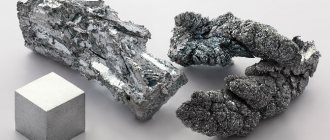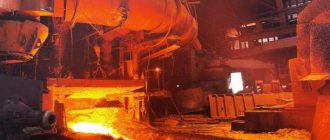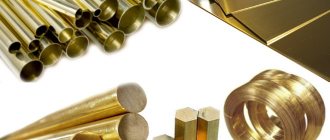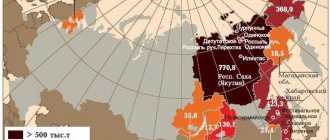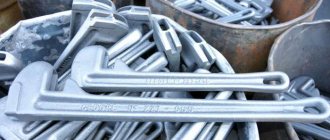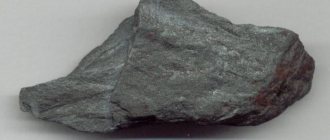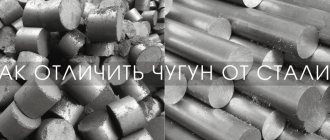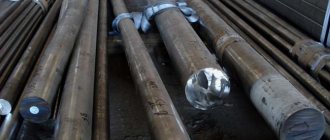Cast iron is an iron-based alloy. Its main advantage is durability. Cast iron products are widely used in machine tool building, the production of pipes and heating radiators, and plumbing products. Most types of cast iron are produced by casting, but this material is also very ductile in forging. This method is used to make fencing and interior decor, such as fireplace grates, weather vanes, forged gates and wickets. The raw materials for the production of cast iron are ore materials, fluxes, and coke.
Metal composition and structure
The production of iron and steel is an important industry in the life of the country. And first, we’ll talk about the composition of the first metal.
Cast iron is made from iron ore. After production, cast iron has the following composition:
- Iron, which contains carbon.
- Manganese impurity.
- Sulfur impurity.
- Phosphorus impurity.
- Silicon impurity.
The percentage of carbon in cast iron is approximately 2.14%.
There are several types of cast iron: white and gray. Each type has an individual composition and structure.
This video will tell you about the composition of cast iron and steel, as well as the nuances of their production:
White look
Due to the characteristics of its composition, white cast iron has a light shade. Consider the composition of white cast iron:
- Cementite (carbon is found here in this state).
- Perlite.
- Ledeburite.
- Silicon.
- Phosphorus.
- Manganese.
- Sulfur.
Gray view
Gray cast iron is missing one component (ledeburite). Gray cast iron consists of:
- Graphite (some of the carbon is present here in this form).
- Perlite.
- Silicon.
- Phosphorus.
- Manganese.
- Sulfur.
Carbon and other components
- The most important element in cast iron is, of course, carbon. Depending on its quantitative content, different types of material are obtained.
- After carbon, silicon comes in second place. Its percentage affects the softness, fluidity and casting properties of the material.
- Thanks to an element such as manganese, cast iron gains strength.
- The presence of phosphorus in the material makes it capable of quickly forming cracks in cold castings. In addition, this impurity significantly reduces the mechanical properties of cast iron. Phosphorus makes cast iron hard and very durable. But such cast iron is not used for the production of parts that require increased strength.
- The most harmful impurity is sulfur. Its presence negatively affects the refractoriness and fluidity of the material.
If you break white and gray cast iron, you can see completely different structures. Visually, the structure of gray cast iron can be represented as a metal matrix with graphite crystals. The matrix can have a completely different appearance. There are:
- Ferritic type (there is no bound carbon in the structure).
- Ferrite-pearlite type (there is bound carbon in an amount of up to 0.8%).
- Pearlite type (carbon amount 0.8%).
Structures are affected by temperature. In the case of rapid cooling, a pearlite structure is obtained, and in the case of slow cooling, a ferritic structure is obtained.
Graphite
Depending on the form of graphite, they are distinguished:
- Malleable cast iron (graphite crystals are flaky).
- Ductile iron (graphite crystals are spherical).
- Ordinary gray cast iron (graphite has a lamellar shape).
Graphite can be incorporated into the structure of gray cast iron in various ways. Depending on this, cast iron is:
- With a nest-like structure.
- With a needle-like structure.
- With a plate-like rectilinear structure.
- With a lamellar swirl structure.
If we compare white and gray cast iron, then gray is the most used. White cast iron is difficult to cut and is difficult to cast. In addition, it is characterized by hardness and fragility.
Chemical composition
Cast irons can be manufactured according to their intended purpose. Depending on the purpose and specific chemical composition, cast irons are:
- High strength . High-strength cast iron is produced by introducing special additives into gray cast iron (liquid state). It is used for very important parts. Ductile iron is often used to replace steel.
- Malleable . Malleable cast iron is obtained from white cast iron. Heat treatment is used for production. Malleable cast iron has good toughness, high ductility, increased resistance to impact and stretching.
- Alloyed . Alloy cast iron contains almost all elements. That is, it contains titanium, chromium, nickel, and sulfur. The material is wear-resistant, hard and durable. This type of cast iron is mainly used for the production of machine parts with high mechanical properties. Depending on the predominant element, cast irons are nickel, chromium and titanium.
- Special (ferroalloys). Special cast iron contains a high content of several elements: silicon and manganese. Such cast irons are mainly used for melting steel and make it possible to remove harmful impurities (oxygen) from steel.
Next, foundry, blast furnace and other processes in the production of cast iron are considered, and the source materials for this are also indicated.
This video will tell you about the production of iron and steel:
Magnetic iron oxide
Magnetic iron oxide in ores is represented by the mineral magnetite. Ore containing mainly magnetite is called magnetic iron ore. Magnetite can be considered as iron oxide FeO ⋅ Fe2 O3. Under the influence of atmospheric moisture and oxygen, ferric oxide in the FeO ⋅ Fe2 O3 molecule reacts with atmospheric oxygen, turning into anhydrous iron oxide Fe2 O3.
The resulting mineral is hematite in composition, but has a different crystal lattice and is called martite. Therefore, magnetite under natural conditions is always oxidized. To characterize the oxidation of magnetite, it is customary to use the ratio Fetotal / FeFeO. In pure magnetite this ratio is 3.0. Usually, ores in which this ratio is less than 3.5 are classified as magnetic iron ores. With a ratio of 3.5 - 7.0, the ores are classified as semi-martites, and with a ratio greater than 7 - as martites.
Magnetic iron ore is usually found in the form of strong lump ores. It contains: 55 – 60% Fe, 0.02 – 2.5% S, 0.02 – 0.7% P and usually acidic gangue (SiO2, Al2 O3). Magnetite is characterized by high magnetic susceptibility, and therefore magnetic iron ores can be enriched using the electromagnetic method.
Iron production
Necessary equipment
To produce cast iron, a huge blast furnace is required. The overall dimensions of this furnace are impressive: height 30 meters, internal diameter 12 meters.
- The widest part of the blast furnace is called steam.
- The lower part is called the forge (hot air enters the oven through it).
- The uppermost part of a blast furnace is called the shaft. It has an upper hole, which is called a Kalashnik. The Kalashnik is closed with a special bolt.
The operation of a blast furnace is based on counterflow. Air is supplied from below, and materials (coke, fluxes and ore) are charged from above. Coke is needed to heat, melt and reduce ore. Without flux, slag cannot form. And ore is the main raw material for the production of cast iron.
In addition to the blast furnace, for the production of cast iron you will definitely need:
- trolleys,
- special crane,
- bunkers,
- conveyors
- and more, in the conditions of a metallurgical plant.
Raw materials
Set of substances
The composition of iron ore includes ore substance and waste rock, which consists of: sandstone with an admixture of clay substances, quartzite, limestone and dolomite. Ore matter refers to iron carbonates, oxides and silicates.
The ore may contain varying amounts of ore matter. Depending on this, she can be rich or poor. Low-grade ore is sent for beneficiation, and rich ore is immediately used in production.
Iron ores come in several types:
- Brown iron ore . The composition includes iron in the form of aqueous oxides. The total percentage of iron is 25-50%. The waste rock of such iron ore can be siliceous-alumina and differ in clay content.
- Red iron ore . The material has a second name - hematite. Iron in the structure of this iron ore is presented in the form of anhydrous oxide. Such iron ore contains very few harmful impurities, and the iron itself contains 45-55%. The color of the ore ranges from dark red to dark gray.
- Magnetic iron ore . Iron is presented in the form of iron oxide and makes up 30-37% of the total amount. This ore is black or dark gray in color. Gang rock is a siliceous mass with other oxides.
- Spar iron ore . The second name is siderite. The color of this substance is dirty gray or yellowish-white. This material is easy to restore. Ironstone oxidizes quite easily and turns into brown limestone. Iron in spar iron ore is presented in the form of carbon dioxide salt.
Manganese ores are used in the iron production process. They are added to the charge to increase the amount of manganese in the cast iron.
Read below about what substances are raw materials for the production of cast iron.
Evaporation of charge moisture
The charge loaded into a blast furnace contains hygroscopic and sometimes hydrate moisture. Hygroscopic moisture easily evaporates and is removed at the top, since the temperature of the top gases is higher than the temperature of moisture evaporation.
H2Ozh → H2Sap.
Hydrate moisture is removed at temperatures above 400 °C, and the released water vapor interacts with carbon monoxide or carbon, enriching the gas stream with hydrogen.
H2Opar + CO = CO2 + H2,
H2Opar + C = CO + H2.
Wax removal
The question of how to obtain cast iron of good quality also comes down to cleaning it from this undesirable element. Sulfur is the main harmful impurity that significantly worsens the properties of the final smelting product. Its main quantity is contained in coke. Sulfur is removed by increasing the lime (CaO) content in the charge and increasing the temperature in the furnace. The reaction in this case looks like this: FeS + CaO = FeO + CaO + Q. Other methods can be used to reduce the percentage of sulfur content in cast iron. For example, sometimes the already smelted material is processed in a discharge chute or a bowl of soda. In this case, the removal of sulfur occurs as a result of the reaction FeS + NaCO3 = FeO + Na2S + CO2.
Registration of a license
The domestic policy of the Russian Federation provides a favorable climate for the development of metallurgical enterprises. All that remains is to competently approach the issue of production and business organization.
The first step is to determine in what form the enterprise will be registered. An individual entrepreneur is absolutely not suitable, since he will have to work with large suppliers of raw materials and wholesale buyers of products. The choice of the form of a legal entity depends on the number of founders and attracted investments. It is allowed to open an LLC, partnership, or JSC. In each case, the management strategy, the size of the management company and the documents for registration are different.
To work in the metallurgical industry you will need a license. Permission is issued for ferrous and non-ferrous metals. There are licensing authorities in the regions, where you should apply with a package of documents. To obtain a license, the business plan includes from 60 thousand rubles. The document is issued after 45 days. The license is valid for an unlimited period. Thanks to such a document, you can legally collect, accept, transport, process and sell metal.
The license is issued on the basis of the following documents:
- statements;
- confirmation of the right to use the territory, premises, office;
- equipment passports;
- decisions on the appointment of the general director;
- diplomas of employees and management;
- Unified State Register of Legal Entities, INN, OGRN certificates;
- constituent agreement and articles of association;
- receipt for paid duty.
The document is issued if the production meets licensing requirements. These requirements include the qualifications of personnel, compliance of the premises with established standards, and the availability of specific equipment. The cost of a license is about 1300 rubles.
What happens in the oven
So, let's look at how pig iron is produced in a blast furnace. The inside of a stove of this design is lined with brick. The principle of its operation is relatively simple. In the production of cast iron, in addition to sinter, coke, lime and flux are used. A mixture of these materials is prepared in a certain proportion. This is what is called a blast furnace charge. It is poured into special lifts and raised to the very top of the furnace.
In order for coke to ignite, a large amount of air enriched with oxygen is necessary. It is fed into the blast furnace from below, through special openings called tuyeres. It is blown into the furnace under very high pressure. This is necessary so that air penetrates through the layer of charge supplied from above. In this case, the flow is preheated to 600-800 degrees, otherwise the temperature inside the furnace will drop.
The cast iron obtained by straightening the charge flows down and is released out through a special hole called a taphole at intervals of approximately once every 40 minutes. Next, it is poured into large-capacity bowls and transported to steelmaking shops.
Mining and processing plants
The main raw material used in the production of cast iron is iron ore. It is mined in quarries in different places in our country. As you know, mined ore contains a large amount of various types of impurities. Of course, it cannot be used for melting cast iron in such a “raw” form. Therefore, at the first stage, it goes to special enterprises - mining and processing plants. Here waste rocks are removed from it and crushed. Then the clean ore is loaded into train cars and sent to metallurgical plants.
Industry challenges
Today, cast iron casting has dubious prospects. The fact is that due to high costs and large amounts of waste, industrialists are increasingly abandoning cast iron in favor of cheap substitutes. Thanks to the rapid development of science, it has long been possible to obtain higher quality materials at lower costs. Environmental protection plays a major role in this issue and does not accept the use of blast furnaces. It will take years, if not decades, to completely convert iron smelting to electric furnaces. Why so long? Because it is very expensive, and not every state can afford it. Therefore, all that remains is to wait until mass production of new alloys is established. Of course, it will not be possible to completely stop the industrial use of cast iron in the near future. But it is obvious that the scale of its production will fall every year. This trend began 5-7 years ago.
